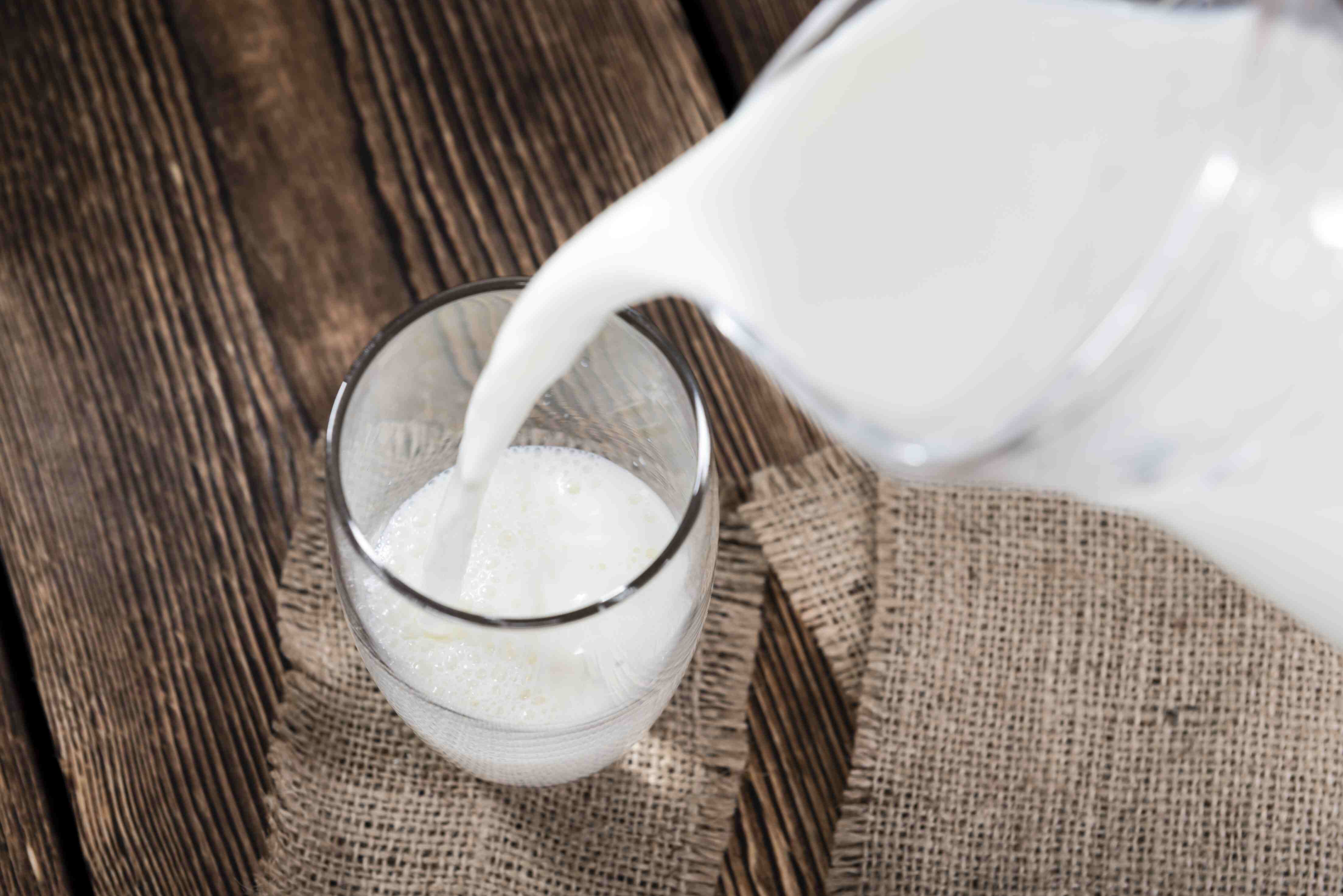Home>Furniture & Design>Interior Design Trends>How Many Carbs Is A Glass Of Pinot Grigio


Interior Design Trends
How Many Carbs Is A Glass Of Pinot Grigio
Published: February 4, 2024
Discover the carb content of a glass of Pinot Grigio and stay updated on the latest interior design trends. Explore our expert insights now!
(Many of the links in this article redirect to a specific reviewed product. Your purchase of these products through affiliate links helps to generate commission for Storables.com, at no extra cost. Learn more)
Introduction
When it comes to enjoying a glass of wine, many individuals are mindful of the calorie and alcohol content, but the carbohydrate content often remains a mystery. Understanding the carbohydrate content of wine, particularly popular varieties like Pinot Grigio, is essential for those who are conscious of their carbohydrate intake. Whether you're savoring a glass of wine with dinner or unwinding after a long day, being informed about the carbohydrate content can help you make more mindful choices.
In this article, we will delve into the often overlooked aspect of wine consumption – carbohydrates. Specifically, we will focus on the carbohydrate content of Pinot Grigio, a beloved white wine known for its crispness and versatility. By shedding light on the carbohydrate content of this popular wine, we aim to provide valuable insights for individuals who are mindful of their carbohydrate intake but still want to indulge in a glass of Pinot Grigio.
Understanding the carbohydrate content of wine involves considering various factors, including the grape variety, fermentation process, and residual sugar. By exploring these elements, we can gain a deeper understanding of how the carbohydrate content in wine is determined. Additionally, we will examine the impact of serving size and production methods on the carbohydrate content of Pinot Grigio, offering a comprehensive overview for those seeking to make informed choices about their wine consumption.
As we embark on this exploration of the carbohydrate content of Pinot Grigio, it's important to approach the topic with curiosity and an open mind. By gaining a better understanding of the carbohydrate content in wine, we can elevate our appreciation for this beloved beverage while making informed decisions that align with our dietary preferences and health goals. So, let's uncork the mystery surrounding the carbohydrate content of Pinot Grigio and embark on a journey of discovery and enlightenment.
Key Takeaways:
- Enjoying a glass of Pinot Grigio? It contains 3-4 grams of carbs per 5-ounce serving, influenced by grape ripeness and winemaking techniques. Stay mindful of your carb intake while savoring this beloved white wine!
- The carbohydrate content of Pinot Grigio is shaped by factors like grape ripeness, fermentation, and aging. Understanding these elements empowers you to make informed choices and appreciate the complexity of this popular wine.
Read more: How Many Calories Is A Glass Of Pinot Grigio
Understanding Carbohydrates in Wine
Carbohydrates in wine primarily come from the natural sugars present in grapes. During the winemaking process, yeast converts these sugars into alcohol through fermentation. However, not all sugars are fermented, and some residual sugar may remain in the wine, contributing to its carbohydrate content. Understanding the carbohydrate content of wine involves considering various factors, including the grape variety, fermentation process, and residual sugar.
The carbohydrate content of wine is often a topic of interest for individuals who are mindful of their dietary intake. While wine is not typically associated with high carbohydrate levels, it's essential to recognize that the carbohydrate content can vary depending on the type of wine and its production methods. For those seeking to manage their carbohydrate intake, understanding the nuances of carbohydrate content in wine is crucial.
In the context of wine, carbohydrates primarily consist of sugars, including glucose and fructose, which are naturally present in grapes. During fermentation, yeast consumes these sugars, converting them into alcohol. However, if the fermentation process is halted before all the sugars are converted, residual sugar remains in the wine, contributing to its carbohydrate content.
It's important to note that the carbohydrate content of wine is not solely determined by residual sugar. Factors such as grape ripeness, winemaking techniques, and aging processes also play a role in shaping the overall carbohydrate profile of the wine. Additionally, the serving size of the wine can impact the actual carbohydrate intake, as larger servings naturally contain more carbohydrates than smaller ones.
By gaining a deeper understanding of the carbohydrate content in wine, individuals can make more informed choices about their wine consumption. Whether it's selecting a wine that aligns with dietary preferences or managing carbohydrate intake while savoring a glass of wine, knowledge about the carbohydrate content of wine empowers individuals to make mindful decisions.
As we continue to explore the carbohydrate content of Pinot Grigio, we will delve into the specific factors that contribute to its carbohydrate profile, shedding light on the nuances of this beloved white wine. Through this exploration, we aim to provide valuable insights that enable individuals to appreciate and enjoy Pinot Grigio while being mindful of their carbohydrate intake.
Carbohydrate Content of Pinot Grigio
Pinot Grigio, known for its refreshing and crisp characteristics, is a popular white wine that has garnered a dedicated following among wine enthusiasts. When it comes to understanding the carbohydrate content of Pinot Grigio, several key factors come into play.
The carbohydrate content of Pinot Grigio is primarily influenced by the residual sugar present in the wine. During the winemaking process, the level of residual sugar in the final product can vary based on the fermentation techniques employed by the winemaker. While Pinot Grigio is generally recognized for its dry profile, some variations may contain a modest amount of residual sugar, contributing to its overall carbohydrate content.
In general, a standard 5-ounce serving of Pinot Grigio contains approximately 3-4 grams of carbohydrates. However, it's important to note that this figure can fluctuate based on the specific winemaking practices of individual producers. The carbohydrate content of Pinot Grigio can also be influenced by the grape ripeness at the time of harvest. Grapes harvested at different levels of ripeness can yield wines with varying levels of residual sugar, ultimately impacting the carbohydrate content of the finished wine.
Furthermore, the production region and winemaking traditions associated with Pinot Grigio can also contribute to the carbohydrate content of the wine. Different winemaking regions may have distinct approaches to crafting Pinot Grigio, which can result in subtle differences in the carbohydrate profile of the wine. Additionally, aging processes and blending techniques employed by winemakers can further influence the carbohydrate content of Pinot Grigio, adding layers of complexity to its overall nutritional composition.
For individuals who are mindful of their carbohydrate intake, understanding the carbohydrate content of Pinot Grigio is essential for making informed choices. By being aware of the factors that contribute to the carbohydrate profile of this beloved white wine, individuals can select Pinot Grigio variations that align with their dietary preferences and health goals.
As we continue to explore the carbohydrate content of Pinot Grigio, it becomes evident that this popular white wine offers a spectrum of carbohydrate profiles, reflecting the diverse approaches to winemaking and the unique characteristics of different vintages. By gaining insights into the carbohydrate content of Pinot Grigio, individuals can elevate their appreciation for this versatile wine while making conscious decisions about their carbohydrate intake.
Factors Affecting Carbohydrate Content
The carbohydrate content of wine, including Pinot Grigio, is influenced by a myriad of factors that collectively shape the nutritional profile and sensory characteristics of the final product. Understanding these factors is crucial for individuals seeking to make informed choices about their wine consumption, particularly in relation to carbohydrate intake. Let's explore the key elements that impact the carbohydrate content of Pinot Grigio:
Grape Ripeness:
The ripeness of the grapes at the time of harvest plays a significant role in determining the carbohydrate content of Pinot Grigio. Grapes harvested at different stages of ripeness contain varying levels of natural sugars, which are ultimately fermented into alcohol during the winemaking process. Grapes harvested at higher levels of ripeness tend to have higher sugar content, potentially resulting in wines with elevated residual sugar and, consequently, a higher carbohydrate content.
Read more: How Many Carbs Is A Glass Of Pinot Noir?
Fermentation Techniques:
The fermentation process employed by winemakers directly influences the carbohydrate content of the final wine. If fermentation is halted before all the sugars are converted into alcohol, residual sugar remains in the wine, contributing to its carbohydrate content. Winemakers have the flexibility to control the fermentation process, impacting the level of residual sugar in the finished wine. Different fermentation techniques, such as temperature control and yeast selection, can yield wines with varying carbohydrate profiles.
Production Region and Climate:
The geographical region where the grapes are cultivated, as well as the prevailing climate, can significantly impact the carbohydrate content of Pinot Grigio. Grapes grown in warmer climates may achieve higher levels of ripeness, leading to increased sugar content and, consequently, a higher carbohydrate content in the resulting wine. Additionally, regional winemaking traditions and practices can influence the approach to managing residual sugar, further shaping the carbohydrate profile of the wine.
Aging and Blending:
The aging process and blending practices employed by winemakers can also affect the carbohydrate content of Pinot Grigio. Wines that undergo extended aging periods or are subject to blending with other grape varieties may exhibit nuanced carbohydrate profiles. Aging in oak barrels, for example, can impart additional flavors and textures to the wine, potentially influencing its overall carbohydrate composition. Similarly, blending with other grape varietals can introduce varying levels of residual sugar, contributing to the carbohydrate content of the final blend.
By considering these factors, individuals can gain a deeper appreciation for the intricate interplay of elements that contribute to the carbohydrate content of Pinot Grigio. This understanding empowers wine enthusiasts to make informed choices that align with their dietary preferences and nutritional goals, ultimately enhancing their enjoyment of this beloved white wine.
Conclusion
In conclusion, exploring the carbohydrate content of Pinot Grigio unveils a fascinating interplay of factors that shape the nutritional profile of this beloved white wine. From the influence of grape ripeness and fermentation techniques to the impact of production region and aging processes, the carbohydrate content of Pinot Grigio reflects the artistry and complexity of winemaking.
Understanding the carbohydrate content of Pinot Grigio is essential for individuals who are mindful of their dietary intake, particularly in relation to carbohydrate consumption. By recognizing the nuanced elements that contribute to the carbohydrate profile of this wine, individuals can make informed choices that align with their health and wellness goals.
As we navigate the world of wine, it's important to approach our consumption with a blend of curiosity and mindfulness. By gaining insights into the carbohydrate content of wines like Pinot Grigio, we can elevate our appreciation for these beverages while making conscious decisions that resonate with our dietary preferences.
Ultimately, the carbohydrate content of Pinot Grigio serves as a reminder of the intricate craftsmanship and natural diversity inherent in winemaking. Each variation of Pinot Grigio offers a unique carbohydrate profile, reflecting the distinct characteristics of the grapes, the expertise of the winemaker, and the influence of terroir.
As wine enthusiasts continue to explore the multifaceted world of wine, understanding the carbohydrate content of wines like Pinot Grigio adds a layer of depth to the tasting experience. It enables individuals to savor their favorite wines with a heightened awareness of their nutritional composition, fostering a holistic approach to wine appreciation.
In essence, the carbohydrate content of Pinot Grigio invites us to embrace a balanced perspective, where the sensory pleasures of wine are harmoniously intertwined with an understanding of its nutritional aspects. By embracing this holistic approach, individuals can savor their glass of Pinot Grigio with a deeper sense of connection to the craftsmanship and artistry that define this timeless beverage.
Frequently Asked Questions about How Many Carbs Is A Glass Of Pinot Grigio
Was this page helpful?
At Storables.com, we guarantee accurate and reliable information. Our content, validated by Expert Board Contributors, is crafted following stringent Editorial Policies. We're committed to providing you with well-researched, expert-backed insights for all your informational needs.















0 thoughts on “How Many Carbs Is A Glass Of Pinot Grigio”